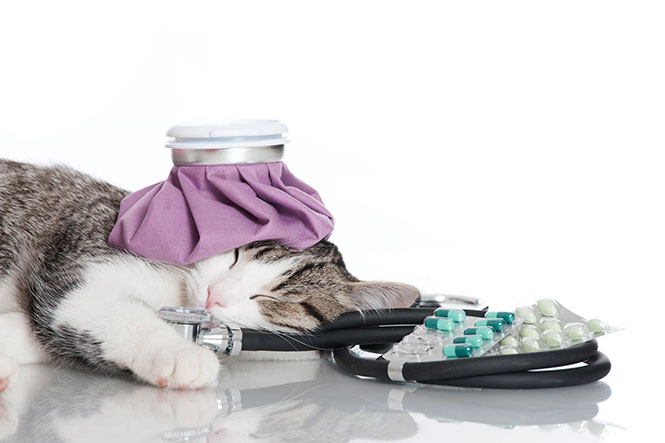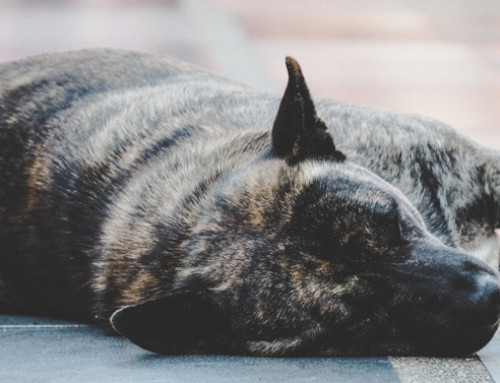For some of us, a cat is both a best friend and an integral member of our family. It comes as no surprise then that, as with our families, the last thing we want to see is our poor feline friends in a condition that is affecting their health.
What is the most important sign that my cat needs to go to the vet?“Breathing issues can be life threatening for cats. Difficulty in breathing is the number one sign that your cat may be in trouble. If they are coughing, wheezing, making loud noises, or struggling to breathe, it could be an emergency; so don’t delay and take them to the vet immediately.” |
Unlike our human relatives, pets can’t speak to us and tell us how they feel or if something is wrong with them. This makes it challenging to try and determine if your kittie is feeling tops or there’s something wrong. There are some signs, however, that are usually a good indication that your cat may need to go to the vet. This blog post will look at some cat behaviour that may signal a need to be taken to the vet.
1. Breathing difficulties
If your cat is making loud noises, coughing, wheezing, or generally struggling when trying to breathe, it’s important you take them straight to the vet. Just like humans, breathing issues in cats are life threatening and so if you find your kittie having trouble breathing, it could be an emergency.
2. Being vocal
Cats are known for being vocal when they’re hungry or just want some attention. However, if your cat has been well fed and received plenty of cuddles but continues to try and catch your attention, it may be a sign that something is wrong. While this isn’t a strong signal, it’s a subtle one that many people may miss.
3. Urinary issues
Male cats are predisposed to urinary tract blockages. This can be a sign of worse conditions, and can even cause kidney and bladder failure if not treated.If you notice that your cat is not using its kitty litter, struggling to pass urine, or has only a small amount come out, then it’s a clear sign that something might be obstructing the flow.
4. Runny nose
It’s not uncommon for cats to have a runny nose and some discharge in the eyes, as they’re quite prone to cold symptoms, just as humans are. However if you notice that your kitty’s nose has been runny for a few days, then it’s a good sign that you should take them to be checked by a professional.
5. Change in eating habits
If your cat suddenly stops eating or drinking, this is a definite cause for concern. Sudden lack of appetite or change in eating habits may indicate a sign of diabetes, kidney failure, and a host of other issues.
6. Excessive sleep
We all know how much cats love their sleep. But if they stop responding to all stimuli and prefer to snooze all day, then they could be battling an illness. Take your cat to the vet if you notice them being more lethargic than usual, with no clear idea of why.
7. Vomiting and/or diarrhea
Many cats occasionally vomit or have loose stool, but if this is persistent or violent then something is definitely wrong. Take your cat straight to the vet if you notice this going on for an extended period of time. Furthermore, the presence of any blood in vomit or stool is an extremely serious sign.
8. Seizure
Just like humans, cats can have fits and seizures. This could signify that they have been exposed to toxins, and a vet will need to give them immediate attention.
9. Hair loss
Cats love their grooming, but if you notice excessive shedding, or even worse, patches of fur loss, then this could be a sign of something serious. Ringworm, fleas, or more serious bacteria or disease could be the culprit behind the hair loss. It’s always best to have your cat examined if you find them losing a lot of fur.
10. Physical injury
This sign is often more noticeable if your cat has been injured in a fight or hit by a car. However, some injuries may begin as a subtle, barely noticeable limp, so always keep an eye on how your cat is moving. Any changes to their regular movement or mobility could warrant a trip to the vet.
11. Disorientation
Cats are agile, precise animals, and we are usually in awe of their skills. For this reason, if you find that your cat is bumping into things, stumbling around, or not jumping with the same accuracy as normal, it’s important that you go to your vet for a checkup. Disorientation could signal anything from vision problems to neurological disease, so it’s something you want to have checked immediately.
12. Sudden paralysis
Anything from ticks to heart disease could result in your cat showing signs of paralysis in their hind end. If affected, your cat will vocalise their pain, breathe heavily, and show other signs of going through a physical struggle.
Some warning signs are more obvious than others when it comes to cats, but it’s important to ensure you’re always aware of how your cat is moving and feeling so that you can notice any changes. Making sure that your cat is well immunised is a good start in prevention, but being familiar enough with them to notice something wrong could potentially save your kitty’s life. Being aware of abnormal behaviour could help you spot signs of trouble before they develop and manifest in other ways.
Cats may present signs or symptoms of illness in different ways, but if you’re ever unsure as to whether they may need medical attention, it’s always best to err on the side of caution and take them to the vet as soon as possible. It may end up being nothing to worry about, but at least you will have a peace of mind. In other cases, you could end up catching a serious issue early on, allowing the vet to provide assistance for the best chance of recovery. For more tips on what to do in a pet emergency, check out this article. And learn more here about options for cat insurance to help out in an emergency.







Leave A Comment